Komentáře / Otázky (306)
![]() Susi napsala:
Susi napsala:
Und noch eine Frage -- ich würde das lieber in Runden stricken anstelle von in Teilen und beim Lesen durch die Anleitung sehe ich keinen guten Grund warum das nicht klappen würde aber fürchte, ich hab was verpaßt. Gibt es außer der Anzahl an Maschen ein Problem hierbei? Und gibt es etwas, was ich ändern muß außer daß ich die Randmaschen weglassen sollte?
03.07.2025 - 22:21Odpověď DROPS Design :
Liebe Susi, wahrscheinlich können Sie die Anleitung anpassen, um das untere Teil in der Runde zu stricken, aber beachten Sie, daß man die Arbeit dann für die Blenden-Maschen teilen muss, und dann wieder bei den Armlöchern, um die neuen Maschen für die Ärmel anzuschlagen. So wenn Sie die Randmaschen weglassen, sollen Sie sie dann anschlagen, damit die Maschenanzahl passt. Viel Spaß beim Stricken!
04.07.2025 - 11:23
![]() Susi napsala:
Susi napsala:
Bin etwas verwirrt bzgl der Größen für das Werk; wenn ich richtig verstehe ist die erste Größe für 1-3 Monate alte Kinder, die zweite für 6-9 Monate alte Kinder etc. Das Kind der Freundin für die ich das Stricken möchte, wäre ca. 4-5 Monate alt, wenn es so kalt ist, daß der Schlafsack angebracht wäre; welche größe nähme ich denn bitte da? Vielen Dank!
03.07.2025 - 21:47Odpověď DROPS Design :
Liebe Susi, es hängt auch an der Grösse in cm vom Baby, z.B. 1.3 Monate ist für ein Baby 50-56 cm und 6/9 Monate ist für ein Baby 62/68 cm. Unten finden Sie die fertigen Maßnahmen, das kann Ihnen vielleicht helfen. Viel Spaß beim Stricken!
04.07.2025 - 11:20
![]() Whitead napsala:
Whitead napsala:
Combien de pelotes de laine pour la réalisation du modèle drops baby 19-10
06.06.2025 - 18:33Odpověď DROPS Design :
Bonjour, cela depend de la taille, de 450-500-550 (650-700)g, cela veut dire de 9 (premiere taille) a 14 (derniere) pelotes. Bon tricot!
09.06.2025 - 08:35
![]() Janine napsala:
Janine napsala:
Ist die zweite Reihe im Muster die Rückreihe?
30.05.2025 - 17:48Odpověď DROPS Design :
Liebe Janine, ja genau, die Rückreihen lesen Sie links nach rechts - hier lesen Sie mehr über Diagramme. Viel Spaß beim Stricken!
02.06.2025 - 07:33
![]() Pam Evans napsala:
Pam Evans napsala:
Hi I am going to order yarn to knit the 'Snuggly Bunny' bunting bag, I have never used a circular needle before so would prefer to use straight needles would that affect the number of stitches to cast on in the pattern?
19.05.2025 - 19:40Odpověď DROPS Design :
Hi Pam, The type of needles used makes no difference to the number of stitches you need to cast on. We recommend circular needles as the number of stitches will make the use of straight needles more difficult; stitches could fall off the end of the needles (you still work back and forth even though you are using circular needles and this problem won't then arise). Regards, Drops Team.
20.05.2025 - 06:39
![]() May Iren Giil napsala:
May Iren Giil napsala:
Når arb måler 44-53-62 (71-82) cm legges det opp nye m til erme på slutten av hver p mot siden som på bakstk = 86-91-100 (112-123) m
07.03.2025 - 12:54
![]() May Iren Giil napsala:
May Iren Giil napsala:
Er det riktig at det skal legges opp 100 m til erm i str 6-9 mnd?
07.03.2025 - 12:52Odpověď DROPS Design :
Hei May Iren. Usikker på hvor du har 100 masker fra, str. 12/18 mnd vil ha 100 masker på hele det ene forstykket. I str. 6/9 mnd: Opplegg til ermer / bakstykket: Når arb måler x cm legges det opp nye masker til ermer i hver side, legg opp på slutten av hver pinne slik: 4 masker 2 ganger, 8 masker 1 gang, 10 masker 1 gang og 14 masker 1 gang = 4+4+8+10+14 = 40 masker til hvert erme. Så på bakstykket vil da ha 70+74+40=154 masker, mens det på hvert av fremstykkene inkl erme vil du ha 51+40=91 masker. mvh DROPS Design
10.03.2025 - 13:57
![]() Natasha napsala:
Natasha napsala:
I've started working on the front piece. Since I'm working flat, I have to read the chart right to left (on RS) and then on the next row ( WS) left to right, correct? And also, the pattern goes: edge st. , M1, M2, purl, M3, M1, edge st., so does the same also apply on the wrong side or is it then edge st., M3, purl, M2, M1, edge st.? Thank you in advance for your help
03.03.2025 - 12:55Odpověď DROPS Design :
Dear Natasha, from RS read diagrams from the right towards the left as stated, from the wrong side, read diagrams from the left towards the right: M.1, M.3, K14 (= reversed stocking stitch), M.2, M.1. Happy knitting!
03.03.2025 - 16:12
![]() Jane napsala:
Jane napsala:
Hvorfor bliver strikketøjet skævt, det trækker mod venstre parallelt. Ville gerne sende et billede, men kan ikke finde ud af det😅
08.09.2024 - 15:29
![]() Pirjo Salo napsala:
Pirjo Salo napsala:
This translation is very poor concerning increases for sleeves. I compared to English version - there must have been idiot making the Finnish version.
08.08.2024 - 17:54
Snuggly Bunny#snugglybunnybuntingbag |
|||||||||||||||||||
 |
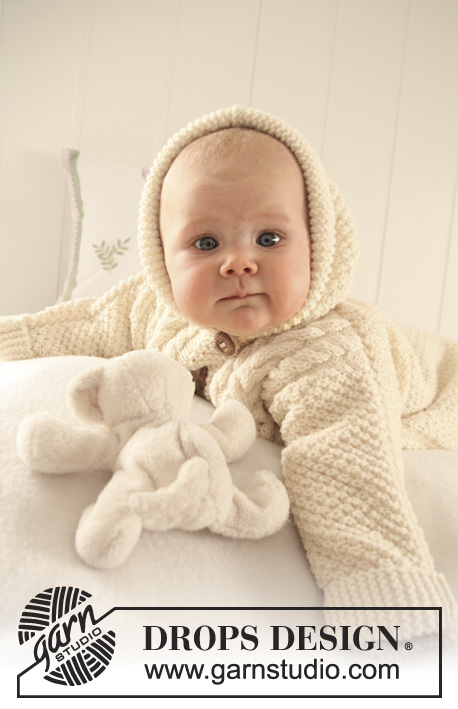 |
||||||||||||||||||
Dětský spací pytel s kapucí a kombinací vzorů z příze DROPS Merino Extra Fine
DROPS Baby 19-10 |
|||||||||||||||||||
|
VROUBKOVÝ VZOR (v řadách): Pleteme stále hladce, lícové i rubové řady. VZOR: Viz schémata M.1 – M.3, vzor je nahlížen z lícové strany. První řada u vzorů M.2 a M.3 = lícová. OTVORY PRO PÁSY v autosedačce či kočárku: V předním i zadním dílu můžeme vyplést otvory pro protažení bezpečnostních pásů. Vypleteme je ve výšce asi 16-20-23 (28-33) cm (ppř. jiné požadované výšce) tak, že uzavřeme středních 10 ok (z těch ok, která máme na jehlici). V následující řadě nahodíme na tomtéž místě 10 nových ok a pokračujeme v pletení jako před tím. KNOFLÍKOVÉ DÍRKY: Knoflíkové dírky vyplétáme v pravé léze. 1 dírka = spleteme 2. a 3. oko od okraje légy a 1x nahodíme. Knoflíkové dírky vyplétáme v těchto vzdálenostech: Velikost 1/3 měsíce: 25, 30, 35, 40, 45 a 50 cm. Velikost 6/9 měsíců: 28, 34, 41, 47, 54 a 60 cm. Velikost 12/18 měsíců: 30, 38, 46, 54, 62 a 70 cm. Velikost 2 roky: 37, 44, 51, 58, 65, 72 a 79 cm. Velikost 3/4 roky: 40, 48, 57, 65, 74, 82 a 91 cm. --------------------------------------------------------- SPACÍ PYTEL: Pleteme ve dvou dílech od spodního okraje nahoru a nakonec sešijeme. Každý díl pleteme v řadách na kruhové jehlici, protože se ni pohodlně vejdou všechna oka. POZN.: Pokud chcete používat bezpečnostní pásy, nezapomeňte na výše popsané instrukce. ZADNÍ DÍL: Na kruhovou jehlici č.4 nahodíme přízí Merino Extra Fine 68-74-82 (86-94) ok (včetně 1 krajového oka na každé straně). Upleteme 4-4-4 (5-5) cm výšky vroubkovým vzorem. Pak upleteme 1 rubovou řadu obrace a pokračujeme vzorem M.1 s 1 krajovým okem na obou stranách pleteným vroubkovým vzorem (po krajovém oku začínáme 1 okem hladce). Ve výši 44-53-62 (71-82) cm nahodíme na každé straně = na konci každé řady nová oka pro rukávy: 2-2-3 (3-3)x 4 oka, 1-1-1 (1-3)x 8 ok, 1-1-1 (2-1)x 10 ok a 1x 12-14-15 (15-16) ok = 144-154-172 (196-218) ok. Přidaná oka postupně zapracujeme do vzoru M.1. Po skončení přidávání pokračujeme v pletení vzoru M.1, ale na obou stranách pleteme 10 ok vroubkovým vzorem (= dolní lem rukávů). Ve výši 54-64-74 (84-96) cm uzavřeme pro průkrčník středních 16-18-22 (24-24) ok a obě náramenice/rukávy dokončíme odděleně. V následující řadě uzavřeme po straně průkrčníku ještě 1 oko = 63-67-74 (85-96) ok zbylých na jehlici (= náramenice + rukáv). Ve výši 56-66-76 (86-98) cm všechna oka uzavřeme. Stejným způsobem dokončíme druhou náramenici/rukáv. PŘEDNÍ DÍL: Nahodíme 68-74-82 (86-94) ok a pleteme vroubkovým vzorem do výše 2-2-2 (2,5-2,5) cm. Následující řadu – lícovou – pleteme takto: 12-13-14 (14-16) ok hladce, *2 oka spleteme hladce, 1x nahodíme, 12-13-15 (12-13) ok hladce*, *-* opakujeme celkem 3-3-3 (4-4)x, 2 oka spleteme hladce, 1x nahodíme a řadu končíme 12-14-15 (14-16) oky hladce (= 4-4-4 (5-5) knoflíkových dírek). Pokračujeme vroubkovým vzorem do výše lemu 4-4-4 (5-5) cm. Upleteme 1 rubovou řadu obrace a SOUČASNĚ přidáme rovnoměrně 22 ok = 90-96-104 (108-116) ok. Následující řadu – lícovou – pleteme takto: 1 krajové oko, vzor M.1 nad prvními 5-8-12 (14-18) oky (na boku začínáme 1 hladkým okem, aby vzor navazoval na vzor zadního dílu), vzor M.2 (= 32 ok), 14 ok obrace, vzor M.3 (= 32 ok), vzor M.1 nad následujícími 5-8-12 (14-18) oky (vzor M.1 bychom měli na boku před krajovým okem končit 1 okem obrace, aby vzor navazoval na vzor zadního dílu) a řadu končíme 1 krajovým okem. V tomto rozvržení vzorů M.1, M.2 a M.3 pokračujeme, ve středu pleteme 14 ok rubovým žerzejem. Ve výši 23-25-28 (33-37) cm odložíme prvních 42-45-49 (51-55) ok na pomocnou jehlici = 48-51-55 (57-61) ok zbylých na jehlici. PRAVÝ PŘEDNÍ DÍL: = 48-51-55 (57-61) ok. Pokračujeme v rozvržení vzorů jako dosud, ale 6 ok směrem ke středu předního dílu pleteme vroubkovým vzorem (= léga) – PAMATUJEME NA VYPLÉTÁNÍ KNOFLÍKOVÝCH DÍREK – viz výše! Ve výši 44-53-62 (71-82) cm nahodíme nová oka pro rukávy – na konci každé řady na boku stejně, jako je popsáno u zadního dílu = 86-91-100 (112-123) ok. Po skončení přidávání pokračujeme v rozvržení vzorů jako dosud, ale 10 ok dolního lemu rukávu pleteme vroubkovým vzorem. Když nám chybí už jen 1 řada do celkové výšky 51-61-71 (80-92) cm – tato řada bude rubová – ujmeme v copánku ve středu předního dílu (vedle légy) 4 oka (tj. ujmeme 2 oka nad copánkem a 1 oko na každé straně copánku). V následující lícové řadě odložíme pro průkrčník 6-7-8 (9-9) ok od okraje légy na pomocnou jehlici. Průkrčník dále tvarujeme – uzavíráme na začátku každé 2. řady: 2x 2 oka a 2-2-3 (3-3)x 1 oko = 70-74-81 (92-103) ok zbylých na jehlici (= náramenice + rukáv). Pleteme jako dosud. Když nám chybí už jen 1 řada do celkové výšky 56-66-76 (86-98) cm ujmeme rovnoměrně 7 ok nad oky copánků ve vzoru M.3 = 63-67-74 (85-96) ok. V následující řadě všechna oka uzavřeme. LEVÝ PŘEDNÍ DÍL: Odložená oka z pomocné jehlice vrátíme na jehlici a nabereme 6 ok nad 6 vroubkovými oky pravé légy = 48-51-55 (57-61) ok. Pleteme jako pravý přední díl, jen zrcadlově otočený a bez knoflíkových dírek. DOKONČENÍ: Sešijeme náramenice + horní strany rukávů, pak dolní stranu rukávů a plynule pokračujeme podél boční strany pytle. Na obou rukávech ohneme asi 5 cm dolního lemu do líce a přichytíme několika stehy. Na dolní lem pytle přišijeme 4-4-4 (5-5) knoflíků, ostatní knoflíky našijeme na levou légu. KAPUCE: Na kruhovou jehlici č.4 nabereme přízí Merino Extra Fine kolem průkrčníku z lícové strany asi 58 až 78 ok (vč odložených ok z pomocné jehlice). Upleteme 1 rubovou řadu hladce, pak 1 lícovou řadu hladce a SOUČASNĚ přidáme rovnoměrně potřebný počet ok na celkový počet 85-89-93 (97-101) ok. Pleteme vzorem M.1 s 6 oky vroubkovým vzorem na každé straně. SOUČASNĚ nahodíme na konci následujících 2 řad vždy 6 nových ok pro záložku = 97-101-105 (109-113) ok – tato oka pleteme vroubkovým vzorem. Pokračujeme vzorem M.1 s 12 oky vroubkovým vzorem na obou stranách až do výše kapuce 21-23-25 (27-28) cm. Pak všechna oka uzavřeme. Kapuci přeložíme a nahoře sešijeme. Záložku ze 6 vroubkových ok ohneme do líce a přichytíme k průkrčníku. |
|||||||||||||||||||
Vysvětlivky ke schématu |
|||||||||||||||||||
|
|||||||||||||||||||
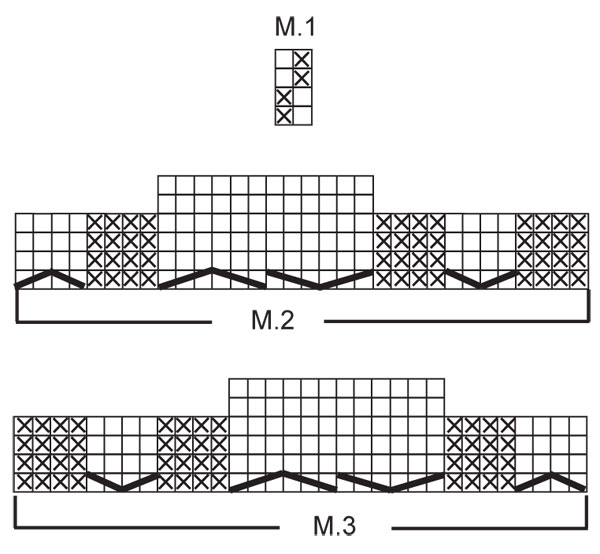
|
|||||||||||||||||||
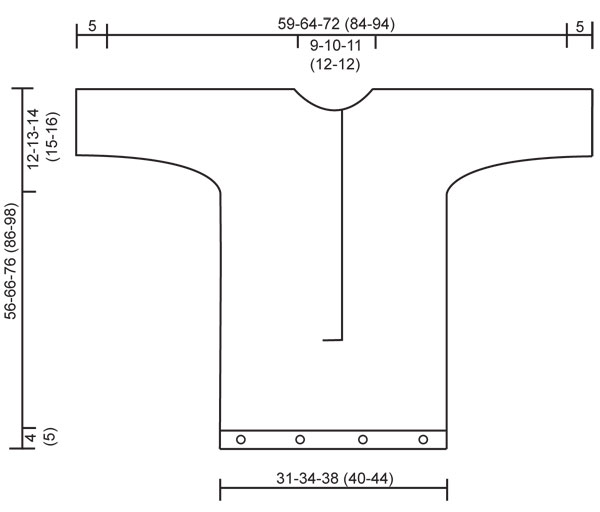
|
|||||||||||||||||||
Dokončili jste tento model?Pak označte své fotky tagem #dropspattern #snugglybunnybuntingbag nebo je pošlete do galerie #dropsfan. Potřebujete s tímto návodem poradit?Otevřete-li si návod na stránce garnstudio.com, najdete tam 18 výukových video-ukázek, Komentáře/Dotazy a další užitečné informace. © 1982-2025 DROPS Design A/S. Vyhrazujeme si veškerá práva. Tento dokument, včetně všech jeho dílčích částí, podléhá autorským právům. Podrobnější komentář k možnostem užití našich návodů najdete dole pod každým návodem na našich stránkách. |
|||||||||||||||||||








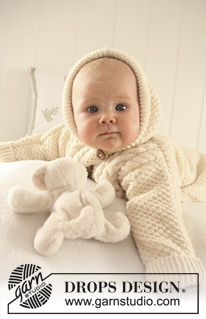



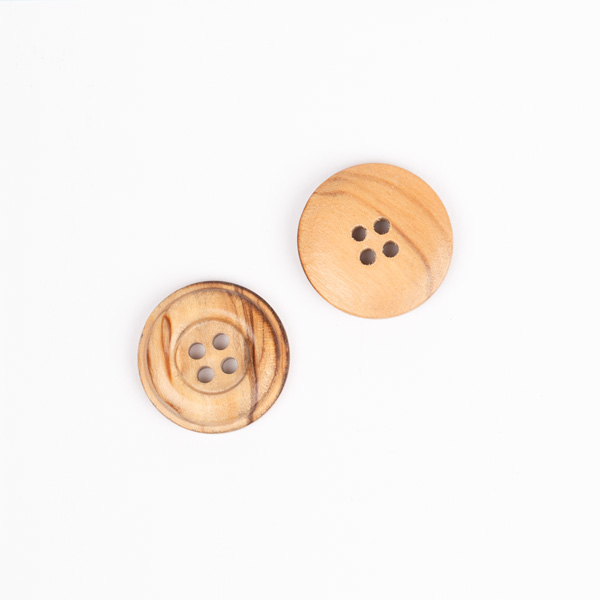

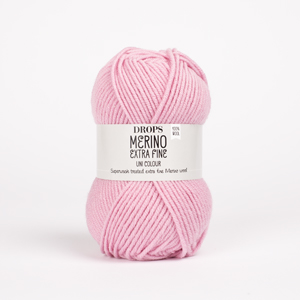
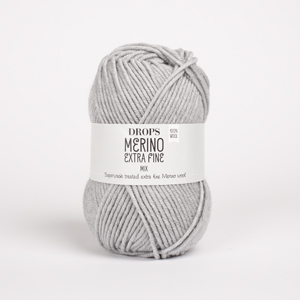
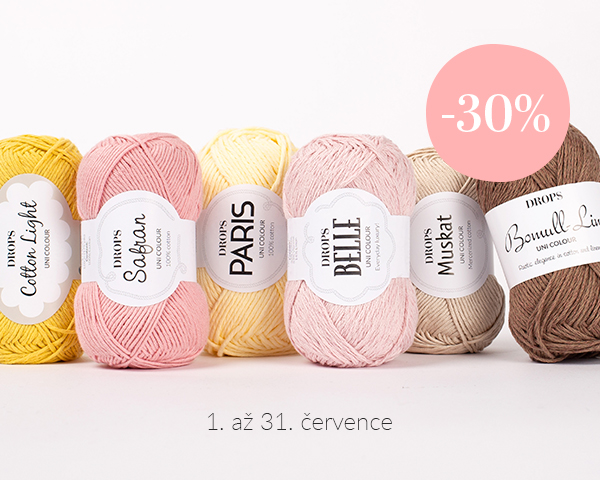
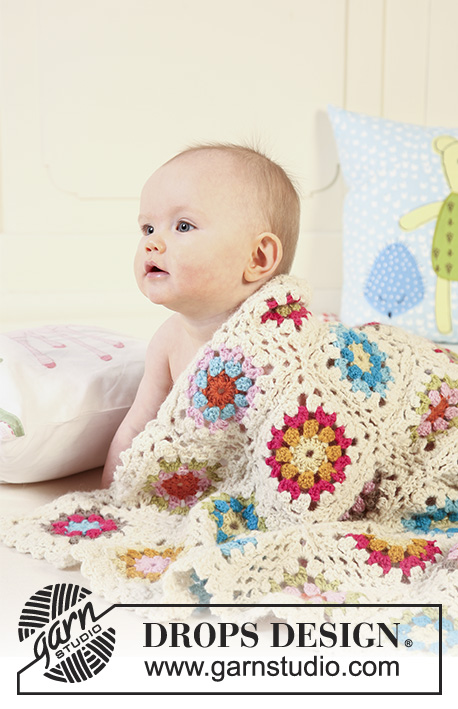









































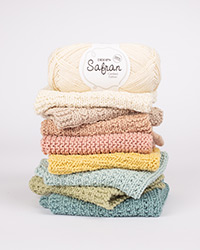
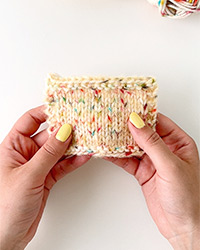
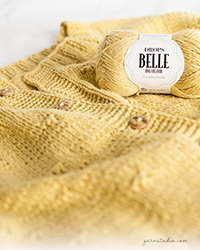
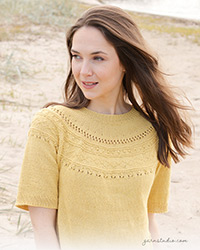
Přidejte komentář k návodu DROPS Baby 19-10
Rádi bychom věděli, co si o tomto modelu myslíte!
Pokud se chcete na něco zeptat, dbejte prosím na to, abyste ve formuláři níže vybrali správnou kategorii - díky tomu se dříve dozvíte, co potřebujete vědět. Povinná pole jsou označena *.